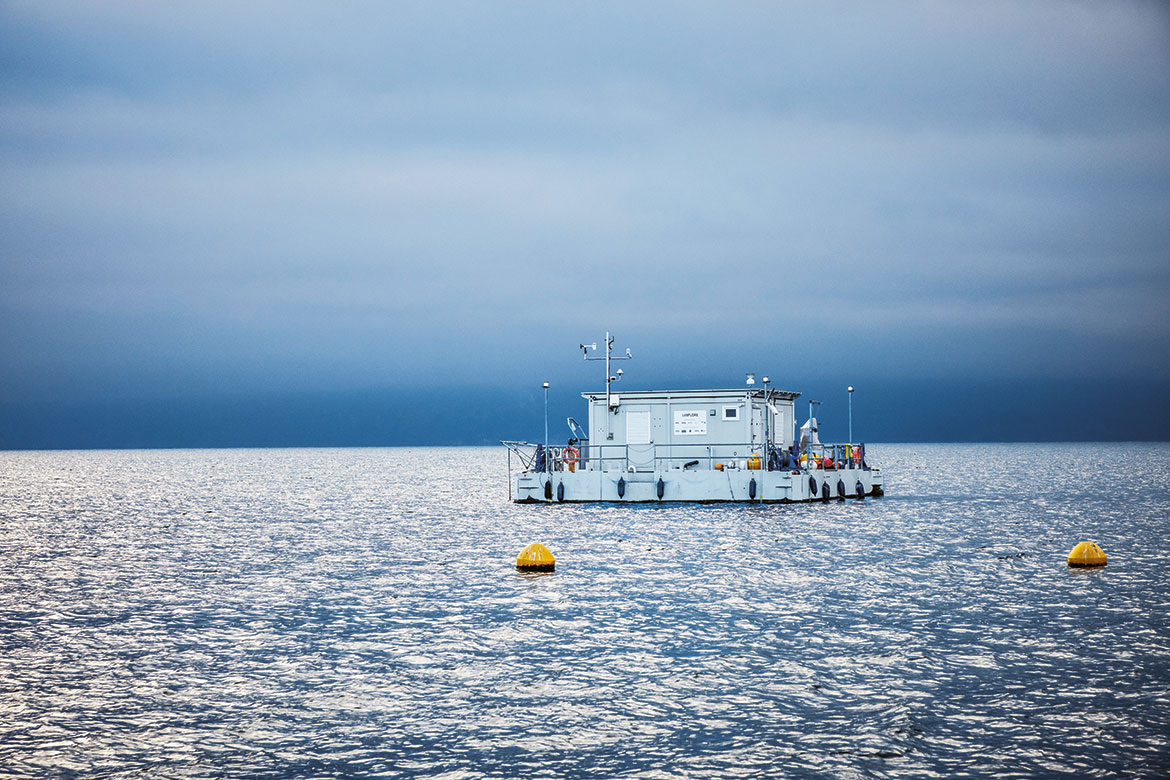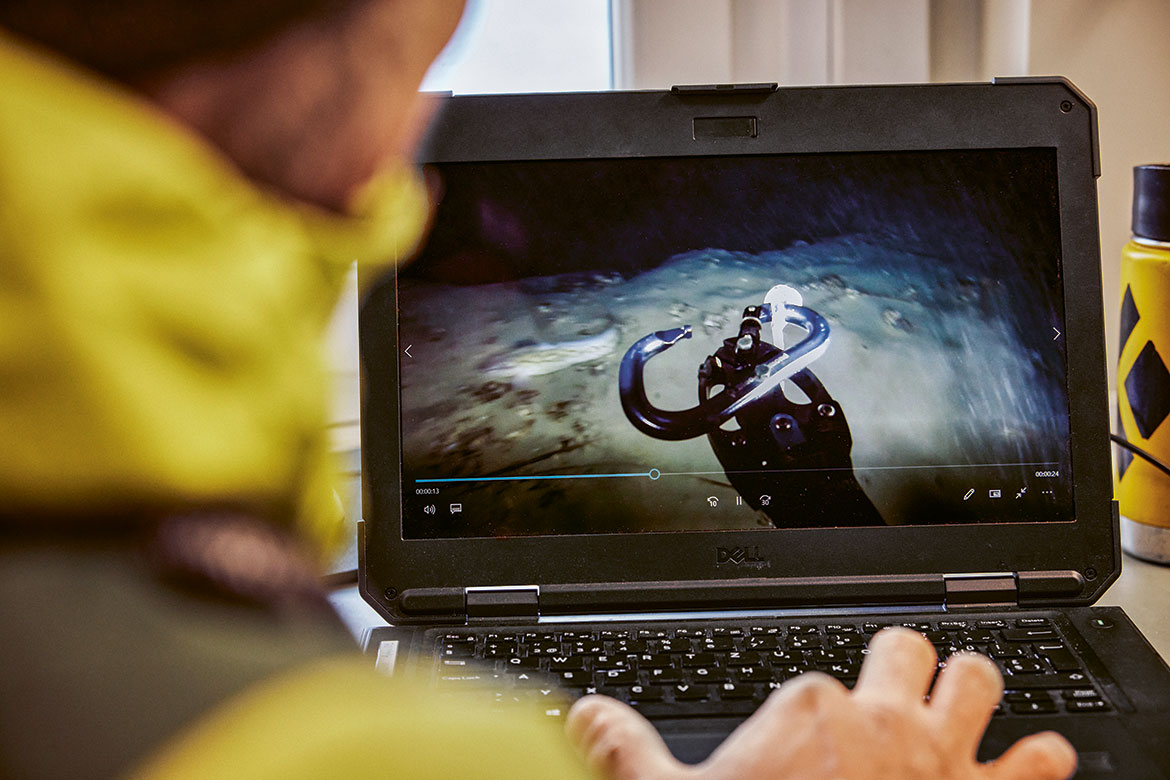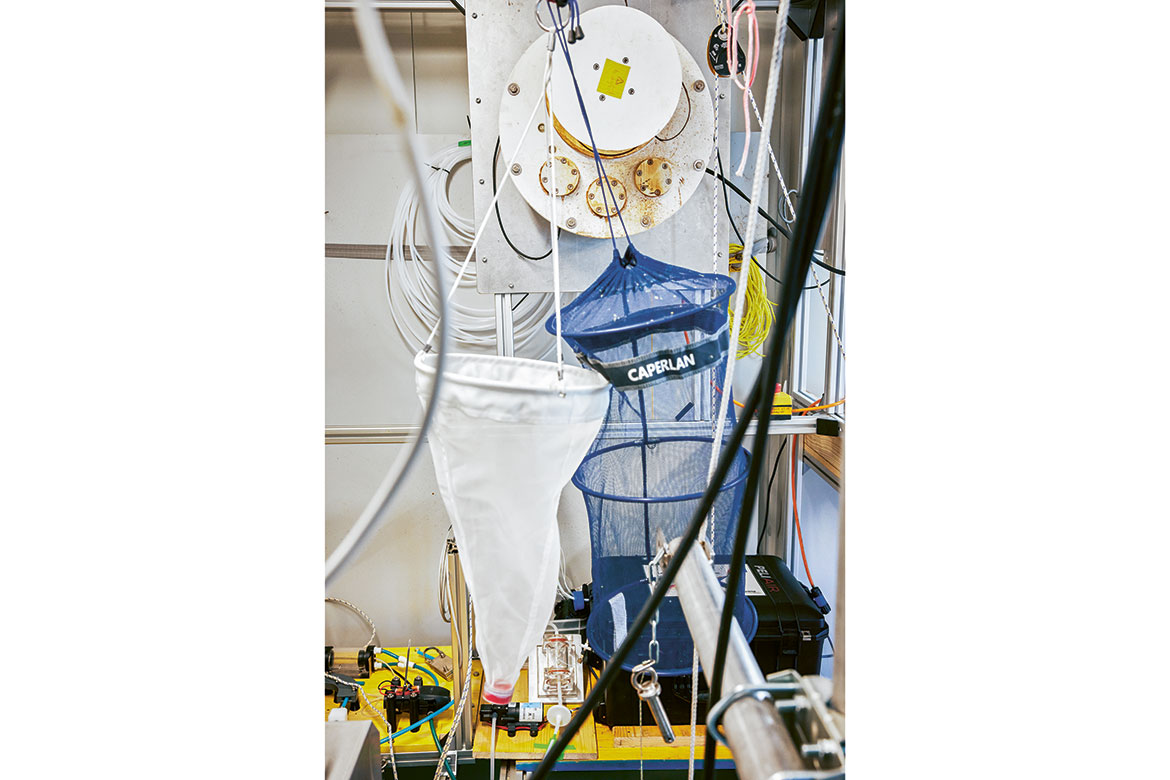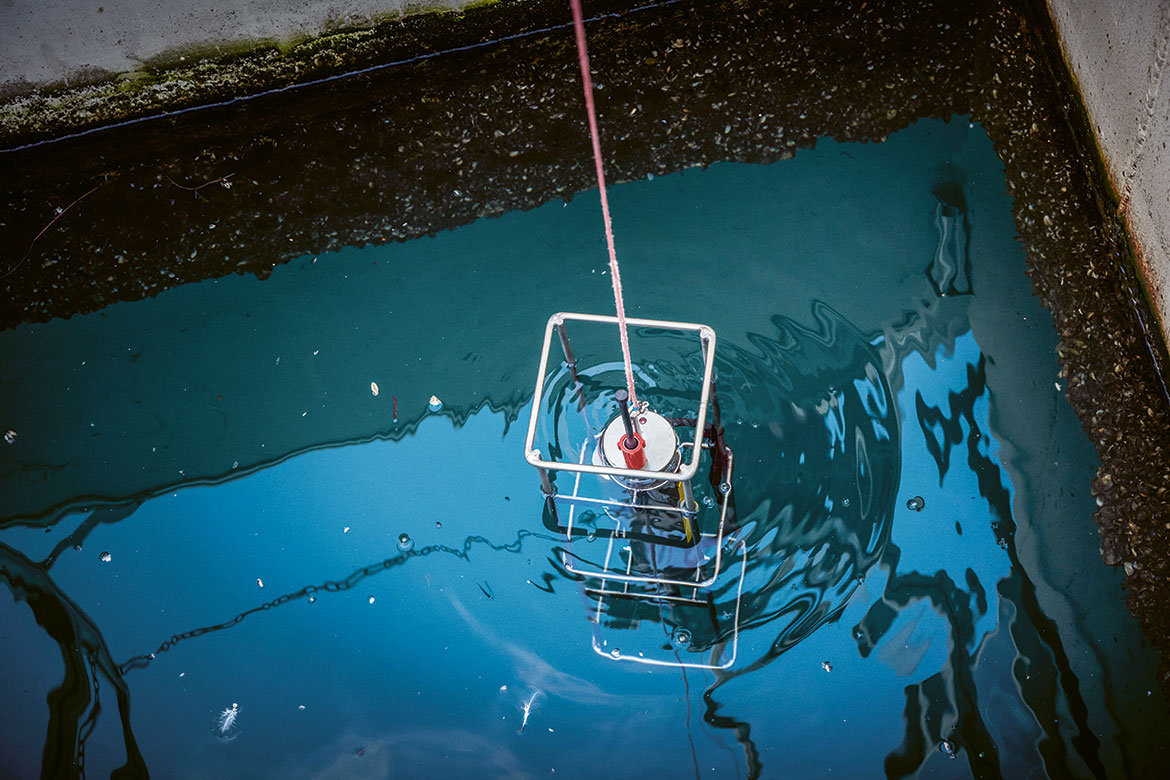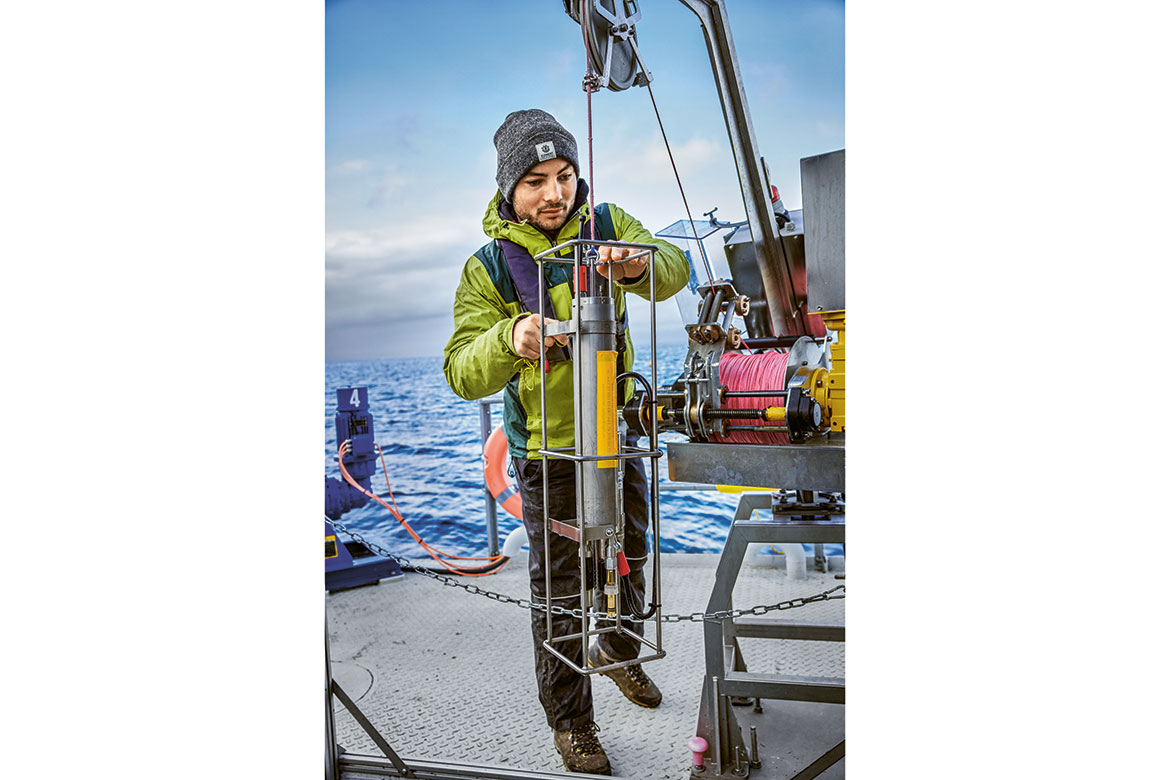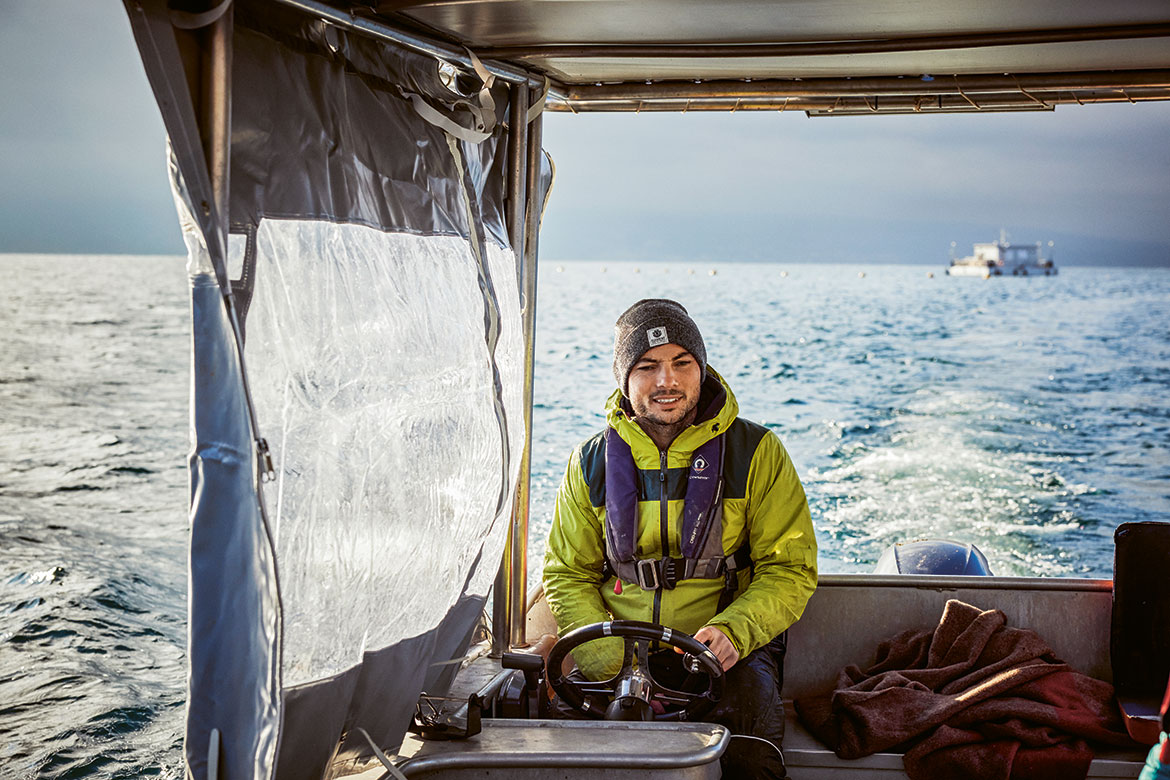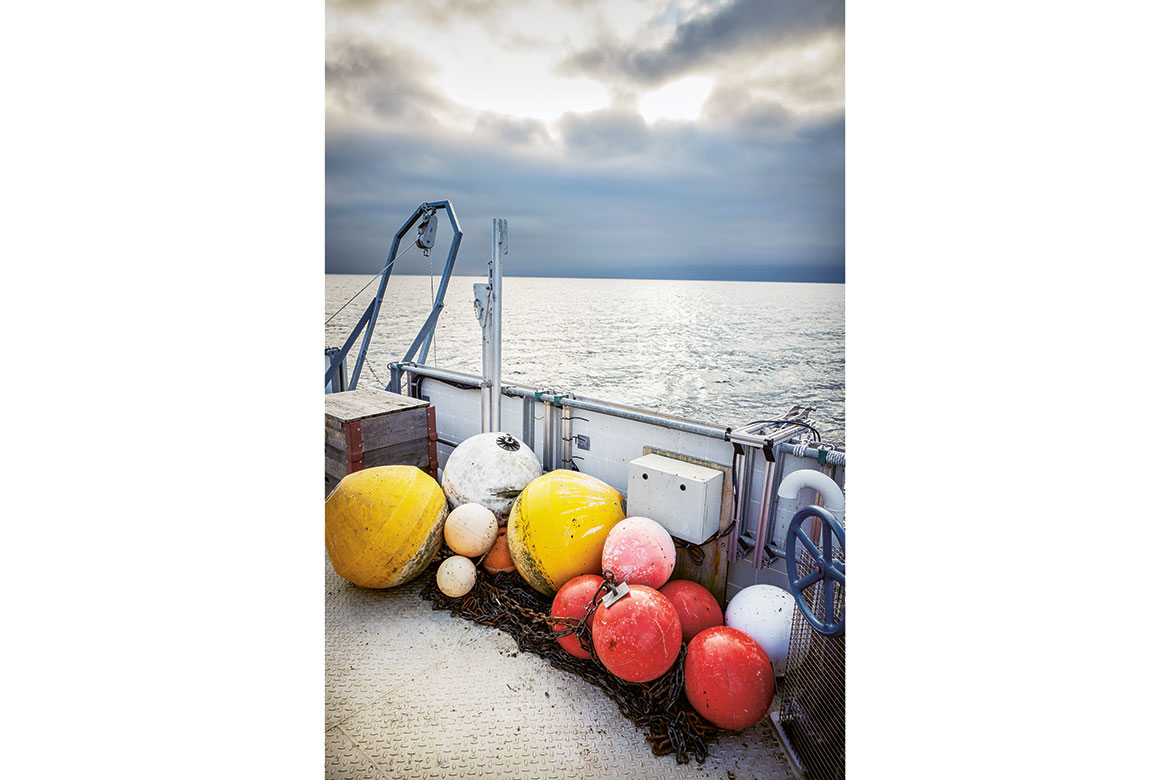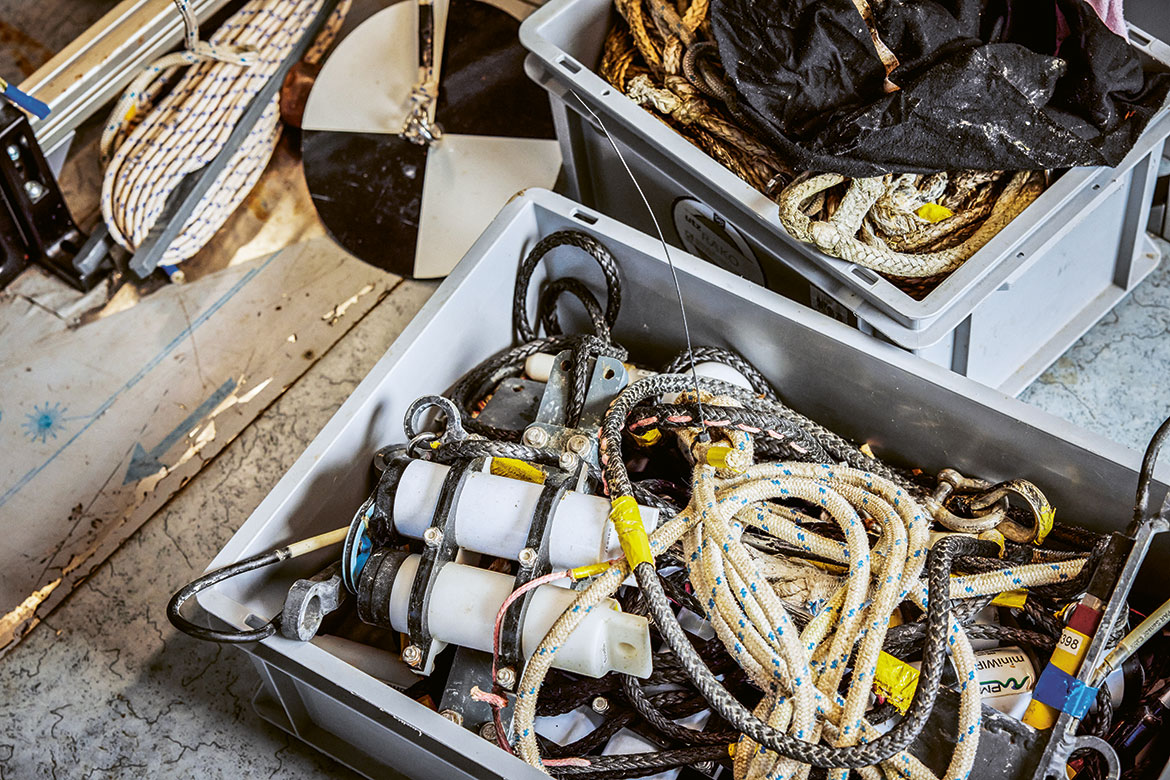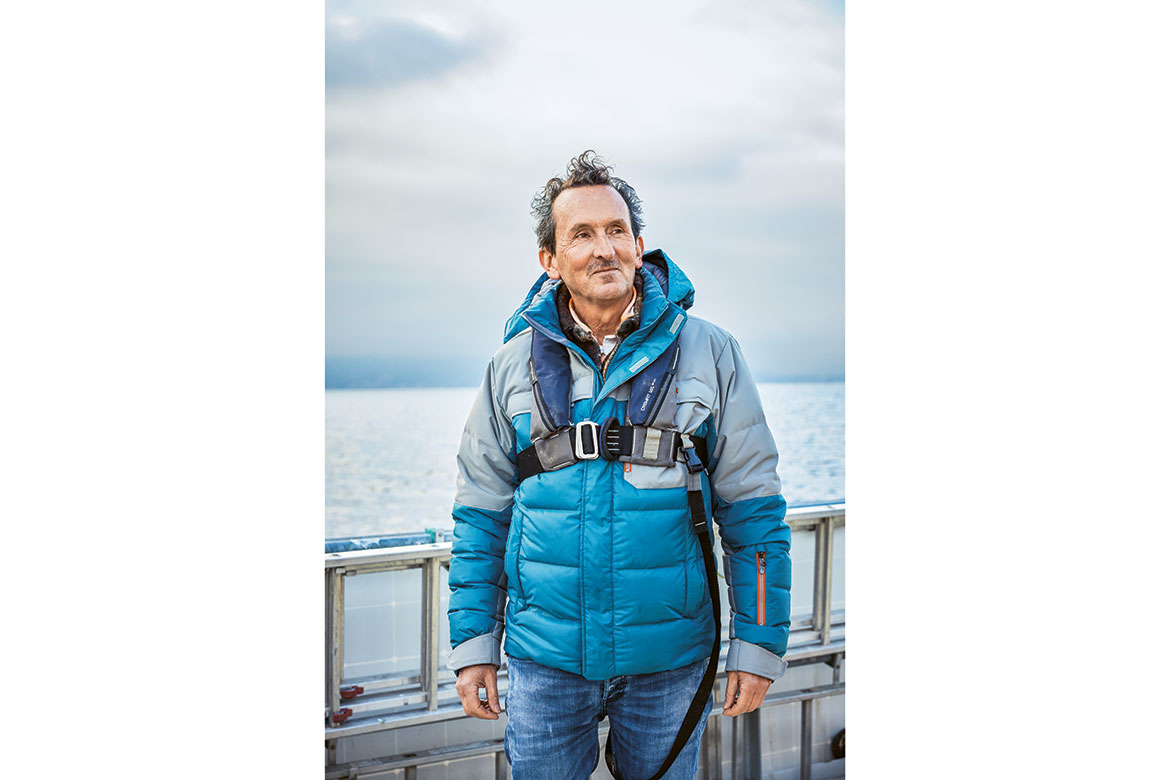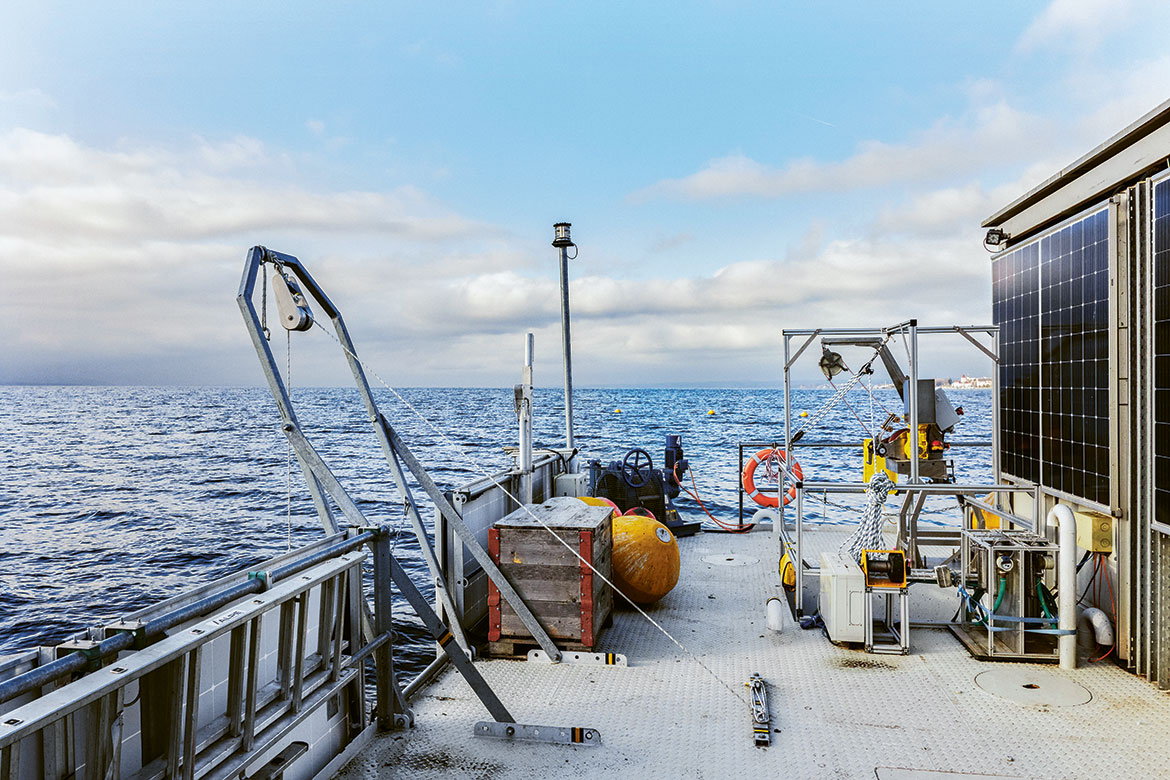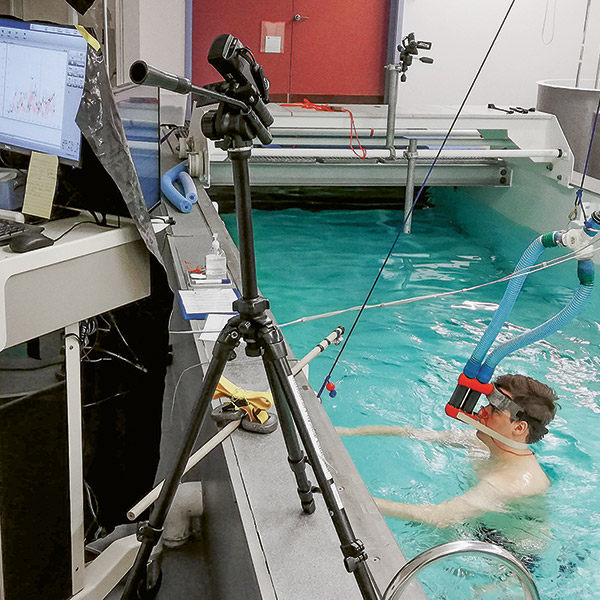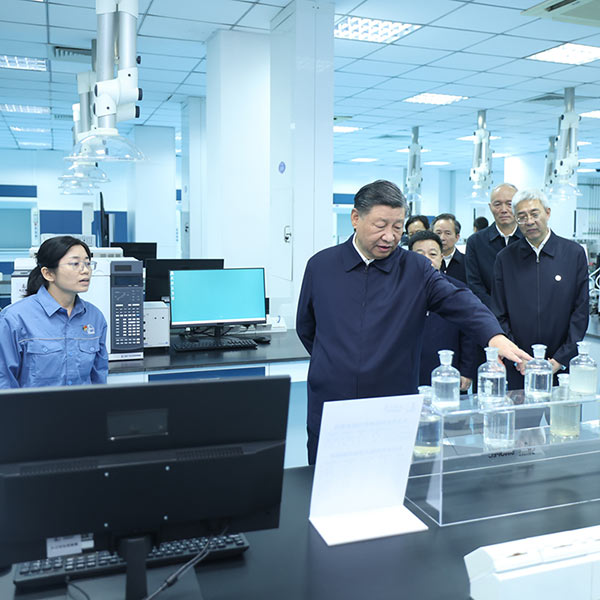REPORT
High-tech data-fishing on Lake Geneva
Since 2019 a lake platform equipped with state-of-the-art instruments has been continuously measuring the parameters of Lake Geneva. The aim is to boost our understanding of environmental changes and to predict the lake’s response to them.
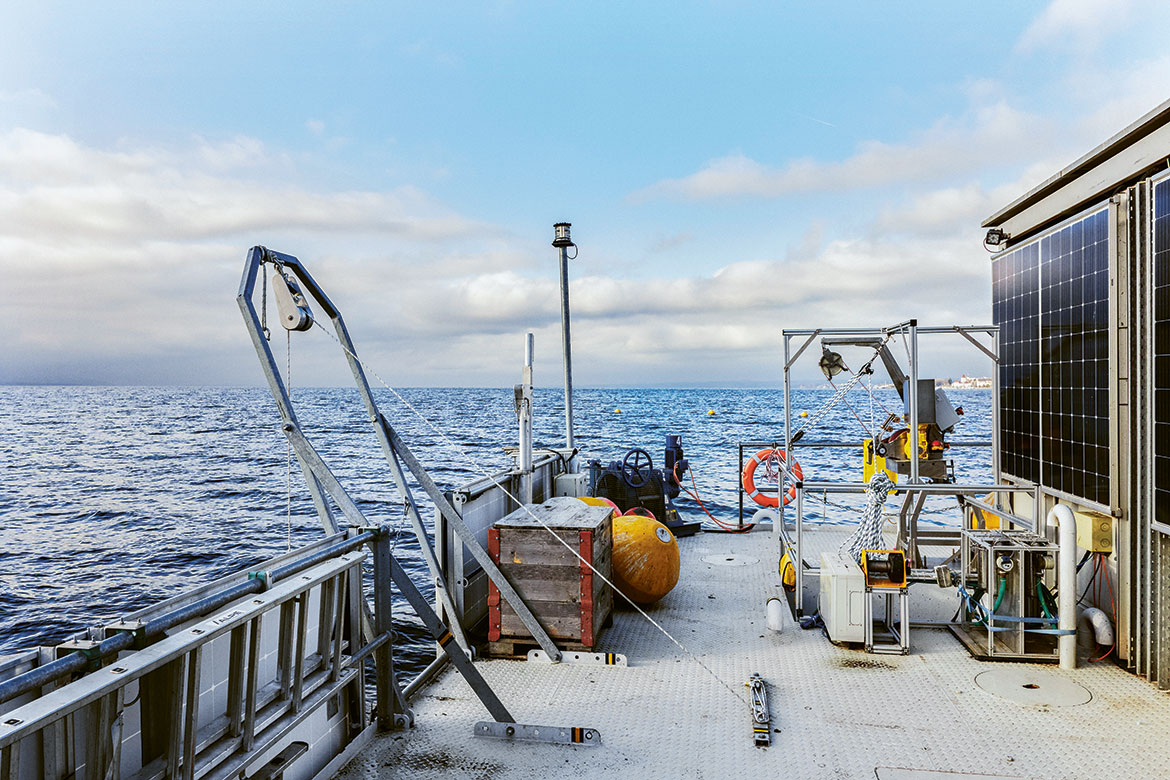
Just offshore from Pully in Vaud, the research station LéXPLORE floats on Lake Geneva. Researchers are using it to expand the field of limnology. | Photo: Sébastien Agnetti
From the port of Pully, Guillaume Cunillera only needs five minutes to reach the LéXPLORE scientific platform, anchored 570 metres from the shore. The floating structure sometimes attracts birds and ducks, says Cunillera during the journey. But above all it attracts scientists: about 100 of them, involved in about 30 different projects. This 100-square-metre laboratory, which was set up in 2019, is unique in the world, according to Bastiaan Ibelings, a professor of microbial ecology at the University of Geneva and a member of the LéXPLORE steering committee.
It is equipped with cutting-edge instruments that allow continuous measurement of the lake’s physical, chemical and biological processes. It therefore offers both the ideal conditions of a research laboratory and very high temporal and spatial resolutions of measurement. “Until now, lake data were dependent on the weather and, in addition, night-time processes were less frequently monitored. Above all, the measurements carried out as part of routine lake monitoring were not taken at sufficiently short intervals to illustrate the real dynamics of lake processes. Thanks to this laboratory, we have more data and therefore a better understanding of what is happening in the lake”, says Ibelings.
Ten minutes to the bottom
As an immediate demonstration, in addition to Cunillera’s routine work – i.e., monitoring the proper functioning of equipment and computers, checking the state of batteries, calibrating sensors, etc. – one of his tasks this morning is to establish a vertical profile using a multiparameter probe. To do this, he lowers it into the lake by unwinding a winch. At a speed of 20 centimetres per second, the probe reaches the bottom in about ten minutes. During its descent, it records the various parameters of the water column: its temperature, its pH, its oxygen level and even its conductivity. This is a classic measurement in limnology and Cunillera carries it out regularly. But it is only a complementary measurement to those taken automatically every 3–6 hours by two of the platform’s systems, providing a wealth of data. This information makes it possible, for example, to quantify more precisely the physico-chemical dynamics of the productive zone of the lake.
The LéXPLORE platform is the result of a partnership among five institutions active around Lake Geneva: EPFL, the universities of Geneva and Lausanne, Eawag and CARRTEL (the Alpine food-web and aquatic-ecosystem research centre) of France’s INRAE and the Université Savoie Mont Blanc (also in France). It is available to scientists who wish to use this infrastructure for their research projects. “From the start, the idea was to integrate a maximum number of researchers with different specialisations in order to know more about this evolving ecosystem. We also felt it was important to share as much data as possible. This is why the LéXPLORE team is committed to processing the data and making it available in real time on the public portal Datalakes”, says Ibelings. With this impressive dataset, the scientists hope to be able to improve their modelling of the key processes in the lake in order to refine foresight regarding the impacts of climate change on Lake Geneva.
Lakes are important natural resources for drinking water, fishing and recreation, but they are also extremely sensitive environments. Warming not only increases the temperature of the surface water, it also modifies the stability of the water columns. This affects the mixing of the water and consequently a whole range of other parameters, from the availability of nutrients to the levels of oxygen at depth. And that’s not all. Lake Geneva is facing other changes, such as a decreasing concentration of phosphorus. “A research project carried out on the platform has made it possible to understand why the primary production of the lakes [Ed. i.e., of organic material, phytoplankton above all] has remained stable despite the drastic decrease in phosphorus concentrations. The scientists showed that up to a critical threshold, the algae are able to produce as much carbon with less phosphorus. Beyond this threshold, primary production decreases in proportion to phosphorus concentrations”, says Natacha Tofield Pasche, the operational director of LéXPLORE.
Another finding: the scientists were able to establish the annual balance of movements generated by wind and temperature changes in the lake. They show that winter mixing is three times greater than in summer, mainly because of the stronger winds. “This innovative study shows that it is essential to consider wind energy in addition to temperatures in order to understand the effects of climate change”, adds Tofield Pasche.
Machine learning and high frequency
On-board the platform, Ibelings is particularly interested in phytoplankton. He is collaborating with Eawag on this aspect. The dynamics of phytoplankton are monitored using an image review and a flow cytometer – an instrument that can count individual cells – to count and characterise the microscopic organisms. Machine learning is used here to analyse large data sets. The objective of this study is to determine how phytoplankton respond not only to changing individual environmental factors, but also to a set of interacting factors, i.e., to study their responses under conditions of real-world complexity. This knowledge will be used to improve predictions of the future functioning of lake ecosystems and to guide lake management. In this context, LéXPLORE performs work that is essential: carrying out relevant monitoring at a high measurement frequency. The life span of phytoplankton is so short that a monthly monitoring of its dynamics would be equivalent to a monitoring a forest every 1,000 years.
Other projects carried out on the platform since its commissioning in 2019 have already yielded a wealth of information. Research by the University of Lausanne to enhance the quantification of the carbon cycle in Lake Geneva has shown the importance of waves on carbon dioxide emissions at the surface of a lake of this size. For Lake Geneva, extreme wind events, which account for six percent of occurrences, could generate up to 25 percent of annual CO2 flows. Another project has been able to identify potentially toxic cyanobacteria throughout the year – including and especially in winter – and is now studying the conditions under which they secrete toxins. The platform is also being used to test new technologies under real conditions: biosensors with fish cells to measure water toxicity, an environmental DNA extractor robot and biodegradability tests for a new polyester.
This lake research tool is not only equipped with state-of-the-art instruments, but is also well thought out. A robot, controlled from the cabin, explores the lake bed to inspect the condition of submerged structures, such as buoys and anchors. If necessary, it is also able to retrieve objects that have fallen into the water. Even remotely, the technicians can also take control of many of the instruments in the laboratory. This is a plus when the weather’s bad, making access to the platform difficult. Comfort has not been forgotten either. “We are almost as comfortable as in the office, we have toilets and even mattresses to sleep on”, says Cunillera. “After nearly three years of operation, I am satisfied to see everything is working as it should. There’s no denying that, on a platform like this, ensuring that everything works is already quite a job! The forces of the lake can break a lot of your gear”, he says. “But I would say that the most satisfying thing about this job is that no two days are ever alike”.

